LAB REPORT
Science and Technology Making Headlines
Nov. 19, 2021

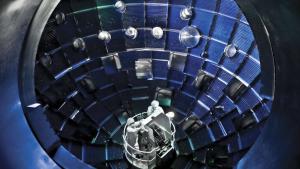
The target chamber at LLNL’s National Ignition Facility, where scientists are one step closer to producing fusion energy.
Hit me with your best shot
Because the need for energy is fueling the climate crisis, it might be tempting to look at the burning sun and wonder whether we could do what it does — nuclear fusion.
Scientists have been trying for decades to achieve fusion. Actually doing so requires overcoming an immense number of logistical challenges. Although fusion is a science that moves slowly, scientists are inching ever closer to achieving the dream.
Fusion’s long-sought goal is a threshold called “ignition,” when the reactor puts out more energy than required to start it — a necessary benchmark to make a fusion power plant viable
In August 2021, National Ignition Facility scientists announced they’d conducted fusion at an efficiency so high it nearly reached ignition.
There is no tokamak in NIF’s successful experiment. Instead, NIF uses a type of reaction called inertial confinement fusion. This relies on taking a tiny pellet of hydrogen fuel, typically the size of a pinhead, and jolting it with powerful shockwaves. As those shockwaves wash over the pellet, they compress and broil the hydrogen inside to pressures and temperatures high enough for fusion to launch.

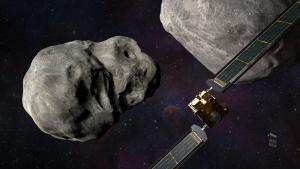
Illustration of NASA’s DART spacecraft and the Italian Space Agency’s LICIACube prior to impact at the Didymos binary system. Image courtesy of NASA/Johns Hopkins, APL/Steve Gribben.
A stitch in time
Potentially hazardous space rocks threaten Earth more than once thought. And NASA and Lawrence Livermore scientists are working to keep them at bay.
Next week, NASA will launch DART (or the Double Asteroid Redirection Test), a mission that will test technologies designed to divert dangerous space objects. The bad news is that actually intercepting a killer asteroid could be a far harder — and more expensive — undertaking. In 2005, Congress mandated that NASA detect and track 90 percent of all near-Earth objects greater than 460 feet in diameter within 15 years. As of January, about 38 percent of the projected 25,000 objects of that size had been found.
NASA should build on DART by testing a gravity-tractor deflection spacecraft. Although it sounds extreme, preparing for a nuclear-armed mission also would make sense; earlier this year, researchers at the Lawrence Livermore National Laboratory and the Air Force Institute of Technology published a study on exactly that. Finally, as a 2018 report from the National Science and Technology Council suggested, the U.S. should start evaluating global launch capabilities — and developing international protocols — in the event a rapid-response mission is needed.

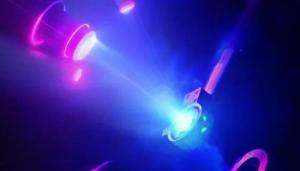
Time-integrated image of a laser-driven shock compression experiment to recreate planetary interior conditions and study the properties of superionic water. Image by Marius Millot and James Wickboldt/LLNL and E. Kowaluk/LLE.
In hot water
In 2019, scientists confirmed the existence of “superionic ice,” a new almost metal-like phase of water that is black and hot, first theoretically predicted more than 30 years ago. Although it has never been seen until then, scientists think this new state of matter might be among the most common forms of water in the universe.
The discovery of superionic ice potentially solves the puzzle of what giant icy planets like Uranus and Neptune are made of. They’re now thought to have gaseous, mixed-chemical outer shells, a liquid layer of ionized water below that, a solid layer of superionic ice comprising the bulk of their interiors and rocky centers.
A team at the Laboratory for Laser Energetics and Lawrence Livermore used one of the world’s most powerful lasers, blasted a droplet of water, creating a shock wave that raised the water’s pressure to millions of atmospheres and its temperature to thousands of degrees. The X-rays beamed through the droplet offered humanity’s first look of water under those extreme conditions.
“You hear the laser blast,” said Marius Millot of Lawrence Livermore, and “right away you see that something interesting was happening.” Millot co-led the experiment with Federica Coppari, also of Lawrence Livermore.

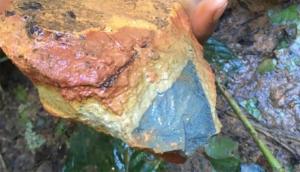
A colorful example of a rock that is partly weathered — in this case, a volcanoclastic rock from Puerto Rico that is being transformed into clays and iron oxides from the outside in. Photo by Eric Slessarev/LLNL.
Rock on
Rock weathering controls the potential for soil carbon storage at a continental scale.
New research from Lawrence Livermore National Laboratory (LLNL) and collaborators found that rock weathering — the process of chemical transformation by long exposure to water and the atmosphere — boosts soil organic carbon storage by altering soil mineralogy.
As rock-derived primary minerals weather to form soil, they create reactive, poorly crystalline minerals that bind and store organic carbon. By implication, the abundance of primary minerals in soil might influence the abundance of poorly crystalline minerals, and consequently soil organic carbon storage.
“We found that the link between primary mineral weathering, poorly crystalline minerals and soil carbon has not been fully tested, particularly at large spatial scales,” said LLNL scientist Eric Slessarev. “To close this knowledge gap, we designed a model that links primary mineral weathering rates to the geographic distribution of poorly crystalline minerals across the U.S., and then used this model to evaluate the effect of rock weathering on soil organic carbon.”
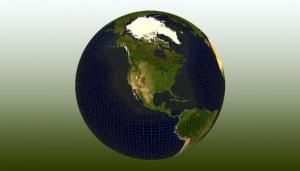
A model of the North American Regionally Refined Model grid showing the grid refinement that includes a 100-kilometer grid globally and 25 kilometers over North America.
Earth model is on the fast track
A new version of the Energy Exascale Earth System Model (E3SM) is two times faster than its earlier version released in 2018.
Earth system models have weather-scale resolution and use advanced computers to simulate aspects of Earth’s variability and anticipate decadal changes that will critically impact the U.S. energy sector in coming years.
Version 2 of the Energy Exascale Earth System Model (E3SM2) is significantly faster than its predecessor and was released to the broader scientific community earlier this fall. The E3SM project is supported by the Department of Energy’s Office of Science in the Biological and Environmental Research Office.
“E3SMv2 is faster and better than E3SMv1,” said Lawrence Livermore National Laboratory atmospheric scientist Chris Golaz. “It’s approximately twice as fast on identical machines, four times as fast on machines we have now, compared to what we had for E3SMv1. From one generation to another, earth system models typically become better but also quite a bit slower, so faster and better is significant.”
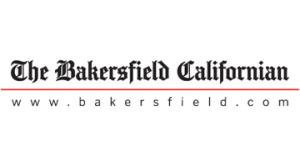
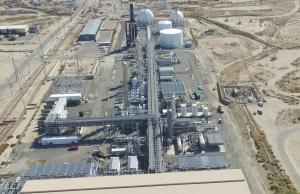
Carbon dioxide would be removed from the emissions stream of the Elk Hills Power Plant under a proposal by facility owner California Resources Corp. The idea is to store that CO2 permanently underground while also benefiting the company's local oil production. Image courtesy of California Resources Corp.
Carbon capture and you
Kern County educators will learn this and more about climate change when they undergo training this weekend on how to teach their students about the potential for fighting climate change through a locally promising process called carbon capture and sequestration (CCS).
Using a 14-day curriculum developed with the help of Lawrence Livermore and the Livermore Lab Foundation, teachers at four local high schools, plus Bakersfield College and Cal State Bakersfield, will be taught introductory-level science of removing carbon from the air and burying it permanently in local oilfields.
LLNL has been studying the underlying technology for years and sees CCS, especially in Kern, as contributing heavily to the state's eventual carbon neutrality. “Climate change represents a very real national security risk," Lab Director Kim Budil said. “As we look to the future, dealing with the carbon already in the environment is essential, so CO2 removal and storage technologies will play a key role in the world's response to this threat.”
The overall effort is known as the Carbon Cleanup Initiative. It was developed in part through input from more than 1,200 voters and 30 community leaders in Kern and the greater Sacramento-San Joaquin Delta area, which is considered the other region of the state with substantial CCS opportunities.


Livermore Lab Report takes a break
The Livermore Lab Report will take a break for the Thanksgiving holiday. It will return Dec. 3.





